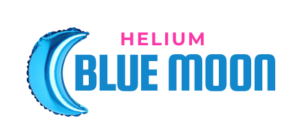IOTA’s 15% Surge Is Just the Beginning—Why Late Investors Might Make the Biggest Gains in 2025
The cryptocurrency market is buzzing with excitement as the IOTA rebase upgrade has already driven a 15% surge in its value. Experts are now predicting a potential 50% gain in the crypto market by 2025, making this a pivotal moment for investors. This upgrade marks a significant step forward in the evolution of blockchain technology, particularly in enhancing decentralization and smart contract capabilities.
The rebase protocol has been a game-changer, introducing features like improved scalability and lower transaction fees. With the testnet already live and the mainnet release on the horizon, the IOTA ecosystem is poised for real-world adoption. A key milestone is the upcoming governance vote, which will shape the network’s future by addressing critical changes in its protocol and tokenomics.
HeliumBlueMoon.com, a trusted source for IoT crypto news, is here to guide you through these developments. Stay tuned as we delve deeper into the technical, investment, and regulatory aspects of this groundbreaking upgrade.
Key Takeaways
- The IOTA rebase upgrade has sparked a 15% surge in its value.
- Experts predict a 50% gain in the crypto market by 2025.
- Enhanced decentralization and smart contract capabilities are key features.
- The testnet is live, with the mainnet release in preparation.
- An upcoming governance vote will shape the network’s future.
Introduction and Market Context
From its inception, IOTA has been at the forefront of redefining blockchain for real-world applications. Its mission to create a decentralized and scalable ecosystem has driven its evolution from a visionary project to a market leader. Over the years, the platform has introduced groundbreaking innovations, setting new benchmarks in the blockchain space.
Background of IOTA and Its Evolution
IOTA’s journey began with a focus on addressing the limitations of traditional blockchain models. Unlike conventional systems, it eliminated miners and high transaction fees, making it ideal for industries like mobility, trade, and energy. The shift from the UTXO model to the new protocol marked a significant milestone, enhancing scalability and programmability.
The platform’s academic rigor and thought leadership have been pivotal in its development. With over 65 research publications, the IOTA team has established itself as a credible partner for governments and institutions globally. This foundation has enabled the creation of a robust ecosystem, attracting partners from various sectors.
Market Response and Surge Analysis
The market has responded positively to IOTA’s innovations, with a 15% surge in its value following recent milestones. This growth reflects the community’s confidence in the platform’s ability to deliver on its promises. Real-world adoption cases, such as collaborations with the World Economic Forum and the European Commission, have further validated its pioneering approach.
The introduction of features like staking rewards and low-latency transactions has also played a crucial role in driving interest. As the testnet transitions to the mainnet, the platform is poised for even greater adoption. This evolution underscores IOTA’s commitment to building a sustainable and scalable network for the future.
IOTA Rebase upgrade: A New Era for Decentralization
The blockchain landscape is undergoing a transformative shift with the latest advancements in decentralized protocols. This evolution marks a significant step toward achieving full decentralization and enabling Layer 1 smart contract functionality. The focus is on creating a more secure, scalable, and efficient network for users and developers alike.
Core Objectives and Protocol Shift
The primary goal of this upgrade is to transition to a fully decentralized protocol. This involves integrating MoveVM, a cutting-edge virtual machine designed to enhance programmability and efficiency. Unlike previous models, this approach focuses on enabling smart contracts at the base layer, ensuring greater flexibility for developers.
Another key change is the shift from coordinator-based validation to a delegated proof-of-stake system, known as Mysticeti consensus. This new model promises higher scalability and lower latency, making it ideal for real-world applications. The testnet is already live, with the mainnet release on the horizon.
Governance Vote and Community Involvement
The upcoming governance vote is a critical milestone in this process. It allows token holders to actively participate in shaping the network’s future. This democratic approach ensures that the community has a voice in key decisions, fostering trust and transparency.
Already, the community has rallied behind the proposal, showcasing its commitment to the network’s growth. The vote will address critical changes in tokenomics and protocol enhancements, paving the way for a more robust and sustainable ecosystem.
For token holders, the benefits are clear: improved security, reduced transaction fees, and enhanced staking rewards. These changes not only strengthen the network but also provide tangible value to its users.
Technical Innovations and Protocol Enhancements
Innovative technical breakthroughs are driving the next wave of blockchain evolution. These advancements focus on improving scalability, security, and efficiency, making decentralized systems more accessible and powerful.
MoveVM and EVM Integration for Smart Contracts
The integration of MoveVM and EVM marks a significant leap in smart contract development. MoveVM enables Layer 1 programmability, allowing developers to build directly on the ledger. This eliminates the need for additional layers, enhancing efficiency and reducing complexity.
EVM compatibility ensures support for legacy and emerging dApps, providing flexibility for developers. This dual approach fosters a diverse ecosystem, attracting a broader range of applications and users.
Scalability, Mysticeti Consensus, and Low-Latency Transaction Features
The Mysticeti consensus model is a game-changer for scalability. It promises over 50,000 transactions per second (TPS) with sub-second finality, making it ideal for real-world applications. This model replaces coordinator-based validation, ensuring higher throughput and lower latency.
These improvements are complemented by advanced tools like a redesigned explorer and a new browser wallet extension. These tools enhance the user experience, making the network more accessible and intuitive.
Upgrade Features and Fee Mechanisms
The new fee mechanism introduces adaptive fee burning and sponsored transactions. This ensures low transaction costs while maintaining network security. Adaptive fee burning adjusts fees based on network demand, preventing congestion and ensuring stability.
Sponsored transactions allow third parties to cover fees, enabling seamless interactions for users. This feature is particularly beneficial for businesses and applications with high transaction volumes.
| Feature | Benefit |
|---|---|
| MoveVM Integration | Enables Layer 1 programmability |
| EVM Compatibility | Supports legacy and emerging dApps |
| Mysticeti Consensus | 50k+ TPS with sub-second finality |
| Adaptive Fee Burning | Maintains low transaction costs |
| Sponsored Transactions | Enables seamless user interactions |
Smart Contracts, Tokenomics, and Ecosystem Growth
The latest advancements in blockchain technology are reshaping how smart contracts and tokenomics drive ecosystem growth. These innovations are not just technical upgrades but transformative tools that empower developers and token holders alike.
Advanced Smart Contract Capabilities
The integration of MoveVM and EVM has unlocked new possibilities for smart contract development. Developers can now build directly on the ledger, eliminating the need for additional layers. This enhances programmability and reduces complexity, making it easier to create scalable applications.
These advancements also support legacy and emerging dApps, ensuring flexibility for developers. The result is a more diverse and robust ecosystem that attracts a wide range of users.
Staking Rewards and Dynamic Tokenomics
The new tokenomics model introduces staking rewards with projected APYs of 10-15%. This incentivizes token holders to participate actively in the network. Additionally, the introduction of Liquid Staking Tokens (LSTs) allows users to earn rewards while maintaining liquidity.
A balanced fee-burning system creates deflationary pressure, ensuring long-term value for the token. This approach not only benefits holders but also strengthens the overall ecosystem.
Enhanced Network Security and Sustainability
Security enhancements are a cornerstone of this upgrade. The transition to a delegated proof-of-stake system ensures higher security and resilience against threats. Validators play a crucial role in maintaining the network, with hardware requirements designed to support robust performance.
These improvements ensure the protocol remains sustainable and scalable, paving the way for future growth. As more dApps and DeFi solutions emerge, the ecosystem is poised for significant expansion.
Investment Potential and Market Opportunities
The digital asset landscape is witnessing a transformative phase, driven by cutting-edge advancements. With the integration of innovative protocols, the investment potential of decentralized networks is reaching new heights. This section explores the metrics, expert projections, and regulatory factors shaping the future of blockchain investments.
Surge Metrics and Expert Projections for 2025
Recent data highlights a 15% surge in value following the latest technical updates. Experts predict a potential 50% gain in the crypto market by 2025, driven by enhanced scalability and staking rewards. These projections underscore the growing confidence in decentralized networks as a viable investment avenue.
The transition from testnet to mainnet is expected to accelerate adoption, offering users a more robust and efficient ecosystem. Features like low transaction fees and simplified fee mechanisms further strengthen the investment case, attracting both new and seasoned investors.
Regulatory Compliance and SME Adoption Insights
Regulatory clarity is a key driver of market growth. The platform’s adherence to compliance measures, including on-chain KYC solutions, makes it particularly attractive to crypto-friendly SMEs in Europe. This focus on transparency and security fosters trust among businesses and investors alike.
Advanced features like the IOTA Gas Station reduce friction for users, enhancing accessibility and usability. These improvements, coupled with robust network security, position the platform as a leader in the digital economy. As more SMEs adopt decentralized solutions, the ecosystem is poised for significant expansion.
Conclusion
The evolution of blockchain technology continues to redefine possibilities, with recent advancements marking a pivotal moment for decentralized systems. The protocol’s testnet is live, and the decisive governance vote highlights the community’s role in shaping its future. Preparations for the mainnet release are underway, signaling a new era of scalability and efficiency.
This transformation enhances smart contract capabilities, enabling developers to build directly on the network. Features like low transaction fees and robust validator systems ensure a secure and sustainable ecosystem. These changes position the platform as a compelling investment opportunity with strong technical and market fundamentals.
Stay informed with trusted sources like HeliumBlueMoon.com for updates on this groundbreaking protocol. The advancements in decentralization and programmability pave the way for broader adoption and significant market gains. Explore further details and prepare for the mainnet launch to be part of this transformative journey.
FAQ
What is the significance of the IOTA Rebase upgrade?
The IOTA Rebase upgrade introduces a protocol shift, enhancing decentralization, scalability, and smart contract capabilities. It aims to improve network efficiency and attract broader adoption.
How does the MoveVM integration impact the ecosystem?
MoveVM integration enables advanced smart contract functionalities, offering developers greater flexibility and programmability. This strengthens the ecosystem’s appeal for decentralized applications.
What role does the governance vote play in the upgrade?
The governance vote ensures community involvement in key decisions, fostering transparency and decentralization. Token holders can vote on proposals, shaping the network’s future.
How does the upgrade enhance transaction efficiency?
The upgrade introduces low-latency transaction features and the Mysticeti consensus mechanism, significantly improving speed and scalability while maintaining security.
What are the benefits of staking rewards in the new system?
Staking rewards incentivize participation, encouraging users to secure the network. This dynamic tokenomics model promotes sustainability and long-term growth.
How does the upgrade address network security?
Enhanced security measures, including robust smart contract protocols and validator incentives, ensure the network remains secure and resilient against potential threats.
What market opportunities does the upgrade create?
The upgrade positions IOTA for increased adoption among SMEs and enterprises, driven by its compliance-ready framework and advanced technical features.
What are the expert projections for IOTA’s growth by 2025?
Experts predict significant growth, with potential gains of up to 50%, fueled by the upgrade’s innovations and expanding ecosystem.

